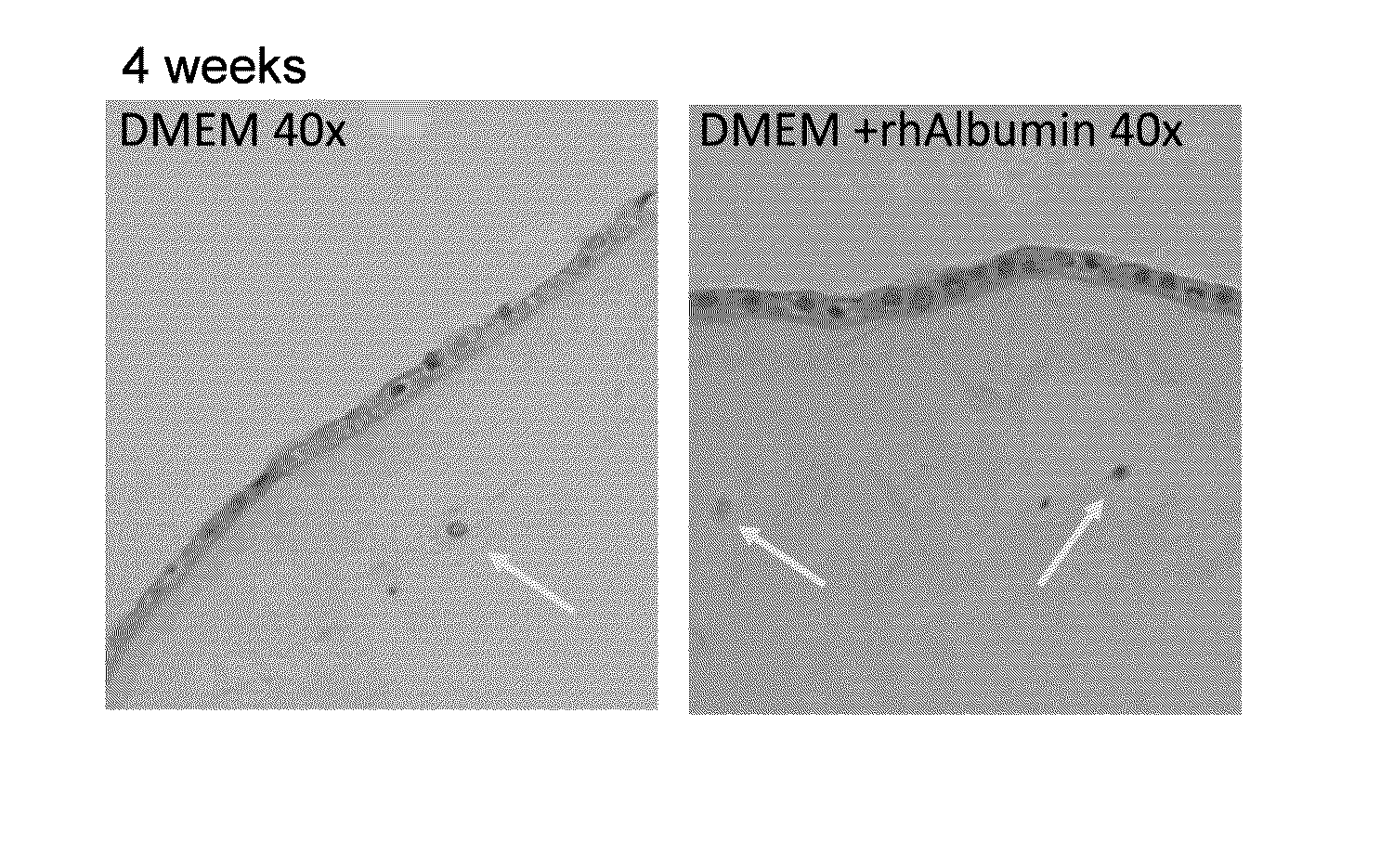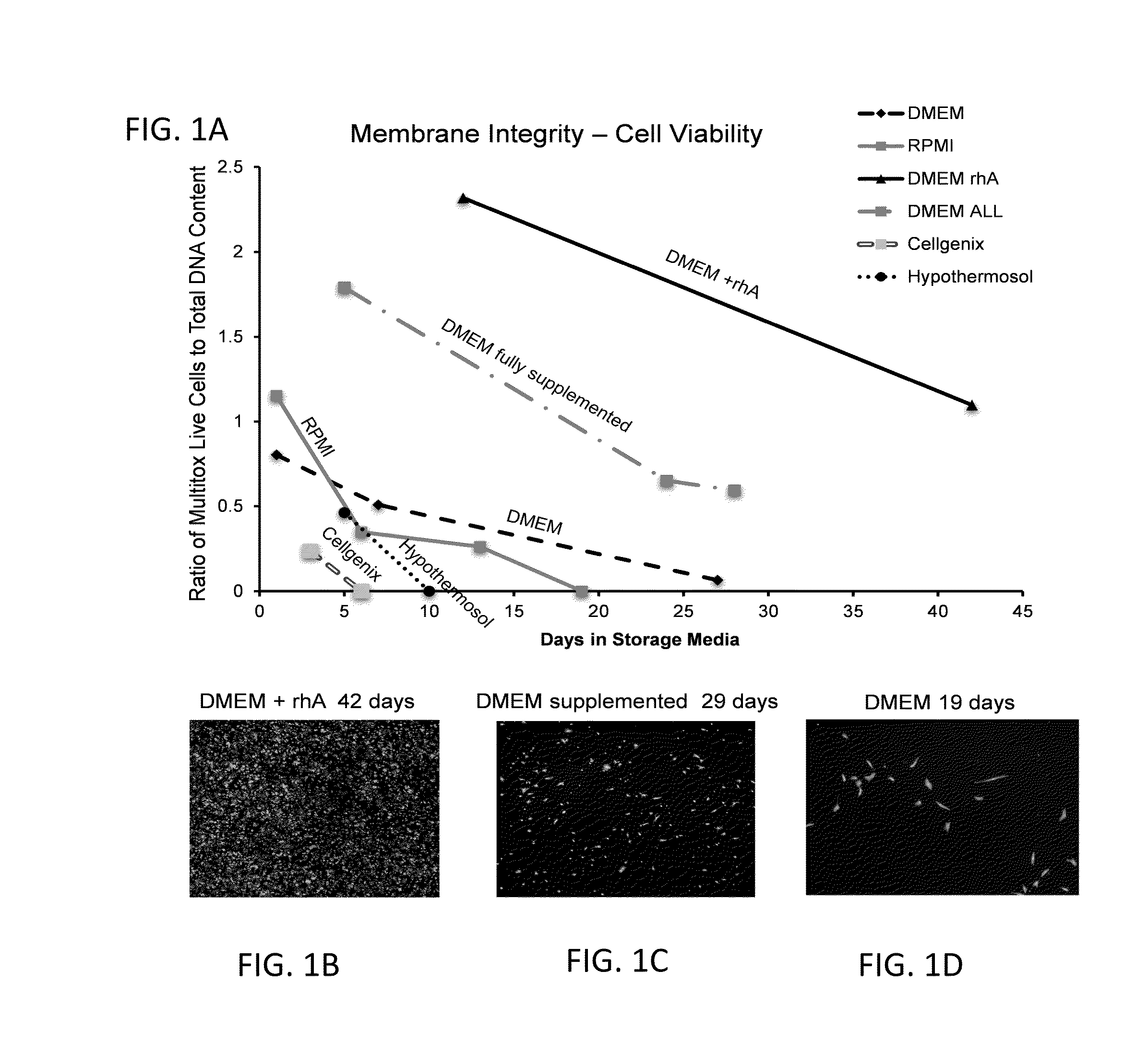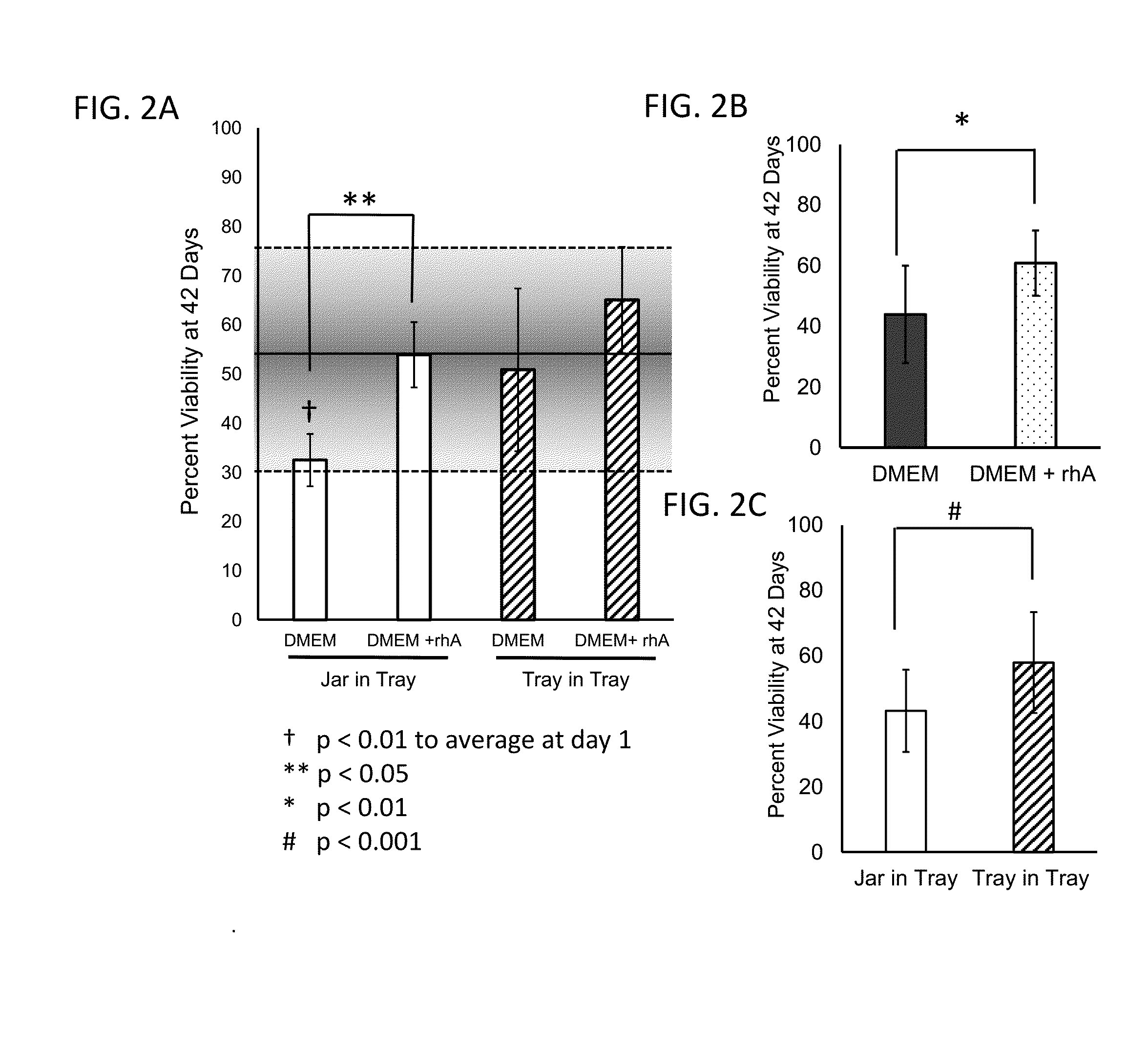Method and Composition for Hypothermic Storage of Placental Tissue
a placental tissue and composition technology, applied in the field of compositions and compositions for hypothermic storage of placental tissue, can solve the problems of inability to achieve in vivo techniques, and inability to achieve in vitro studies
- Summary
- Abstract
- Description
- Claims
- Application Information
AI Technical Summary
Benefits of technology
Problems solved by technology
Method used
Image
Examples
Embodiment Construction
[0068]Before the present compositions, articles, devices, and / or methods are disclosed and described, it is to be understood that they are not limited to specific methods unless otherwise specified, or to particular reagents unless otherwise specified, and as such may vary. It is also to be understood that the terminology as used herein is used only for the purpose of describing particular embodiments and is not intended to be limiting.
[0069]This application references various publications. The disclosures of these publications, in their entireties, are hereby incorporated by reference into this application to describe more fully the state of the art to which this application pertains. The references disclosed are also individually and specifically incorporated herein by reference for material contained within them that is discussed in the sentence in which the reference is relied on.
A. DEFINITIONS
[0070]In this specification, and in the claims that follow, reference is made to a num...
PUM
 Login to View More
Login to View More Abstract
Description
Claims
Application Information
 Login to View More
Login to View More - R&D
- Intellectual Property
- Life Sciences
- Materials
- Tech Scout
- Unparalleled Data Quality
- Higher Quality Content
- 60% Fewer Hallucinations
Browse by: Latest US Patents, China's latest patents, Technical Efficacy Thesaurus, Application Domain, Technology Topic, Popular Technical Reports.
© 2025 PatSnap. All rights reserved.Legal|Privacy policy|Modern Slavery Act Transparency Statement|Sitemap|About US| Contact US: help@patsnap.com



